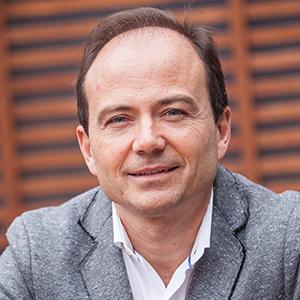BRAF inhibition as an alternative to chemotherapy in the treatment strategy of hairy cell leukemia

Enrico Tiacci
MDUniversity of Perugia. Department of Medicine and Surgery
Project Term: January 1, 2023 - December 31, 2025
Hairy cell leukemia (HCL) is very sensitive to chemotherapy, whose toxicity to the bone marrow and the immune system is however concerning. We have established vemurafenib plus rituximab as a very effective chemotherapy-free regimen in relapsed/refractory HCL (NEJM, in press). Here, we will test it in a clinical trial against a chemotherapy-based standard of care represented by cladribine plus rituximab, aiming at lower toxicity and similar efficacy.
Hairy cell leukemia (HCL) usually responds well to chemotherapy, with about 85% of patients achieving durable remissions. However, chemotherapy suppresses the function of the bone marrow and the immune system. This drawback poses concerns in patients presenting with infections (often induced by HCL itself) and/or suffering from other diseases that contraindicate chemotherapy. Finally, avoiding the risk of developing severe infections after chemotherapy is a desirable goal in general, as the count of white blood cells (already low due to the HCL) is initially further decreased by chemotherapy, thereby augmenting infecion risk in all patients.
We discovered the mutation of the BRAF gene as the cause of HCL and thereby opened the way to chemotherapy-free strategies that are based on the BRAF inhibitor vemurafenib (a drug taken by mouth). In patients relapsed after chemotherapy, we showed that vemurafenib produced complete remissions in about 35% of cases. However, some residual disease always persisted (even in complete responders), and remissions were not particularly durable. In the same type of patients relapsed after chemotherapy, we then added immunotherapy with rituximab on top of vemurafenib, a strategy that greatly improved the rate of complete remission (to ~90%), clearance of residual disease (to ~65%) and survival free from leukemia relapse (to 85% at ~3 years). Importantly, this combo strategy did not prove toxic for the bone marrow and the immune system. Here, we aim at establishing a safe and effective chemotherapy-free strategy in previously untreated patients through a clinical trial that will be conducted in many hematology centers recruiting a total of about 100 patients. In particular, we will compare vemurafenib plus rituximab (VR), which will be given to half of the patients, against cladribine (CDA, a chemotherapeutic agent) plus rituximab (CDAR), which will be given to the other half of patients. Compared to CDAR, we aim to obtain with VR a similar efficacy (close to 100% CR rate) but fewer clinically relevant drug toxicities. We will also evaluate: i) how well the two treatments clear minimal residual disease; ii) how quality of life is impacted by treatment, as reported by the patients themselves; and iii) what the global treatment costs are, i.e. not just the cost of the drugs but, for example, also those of the hospitalizations often required to manage patients developing fever and/or infections after chemotherapy.
The Hairy Cell Leukemia Foundation (HCLF) and The Leukemia & Lymphoma Society (LLS) have joined forces to create the HCL2025 program to support targeted research to build a more comprehensive foundational understanding of the molecular basis of hairy cell leukemia (HCL), develop additional therapies, and optimize outcomes for patients with this disease.